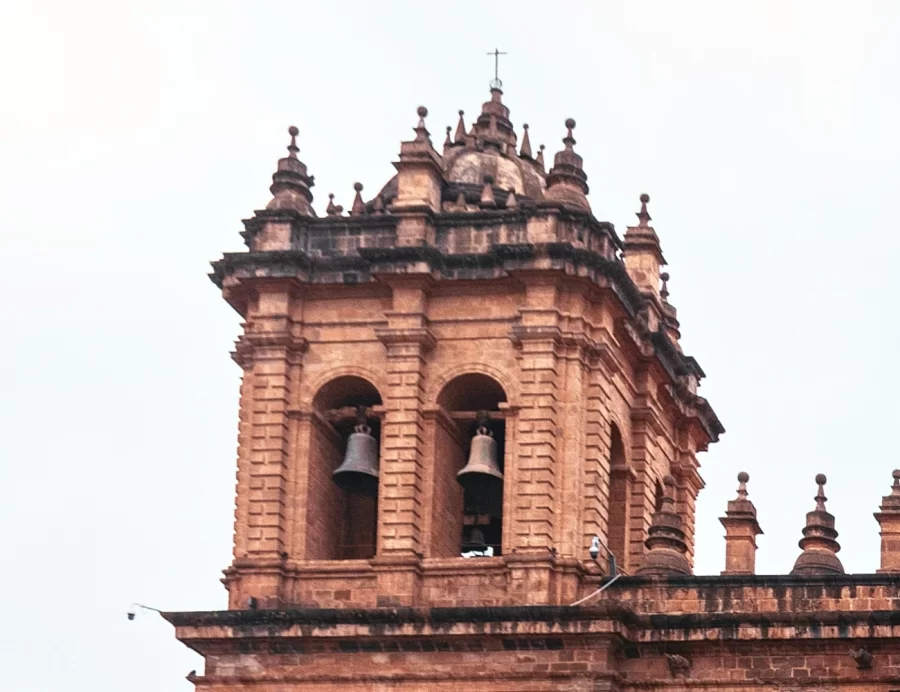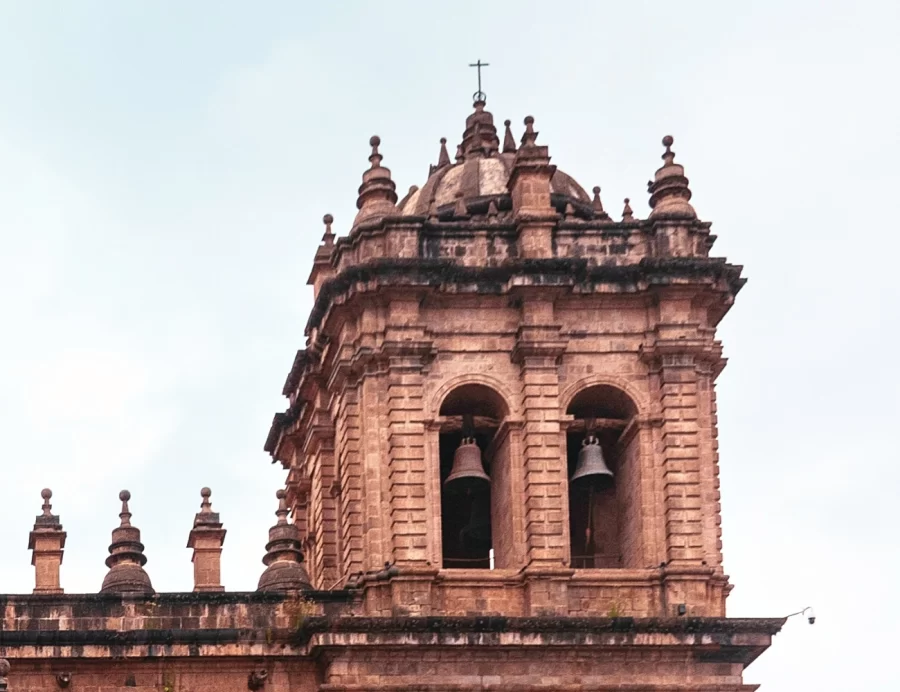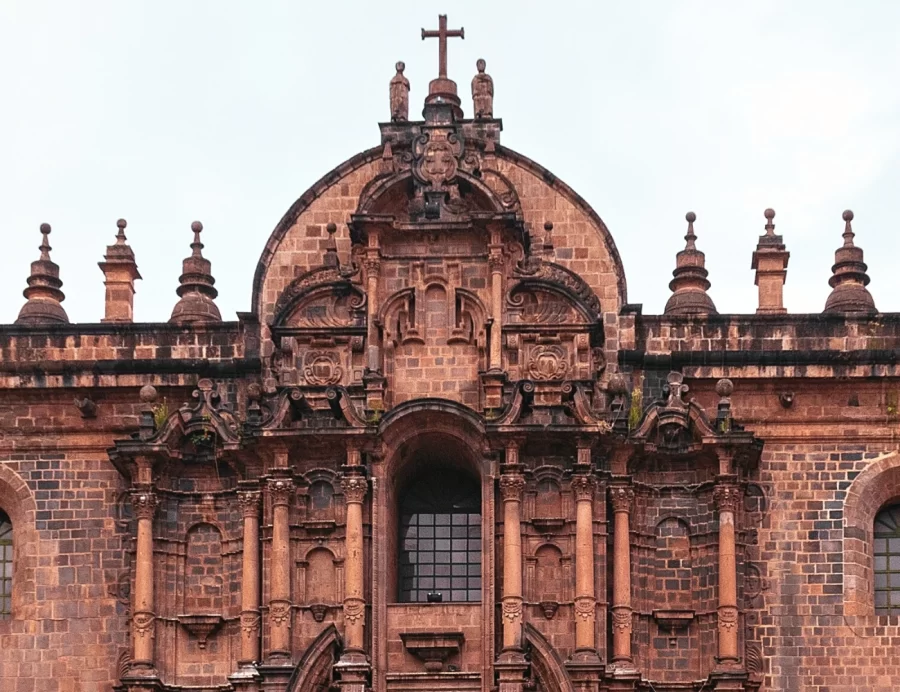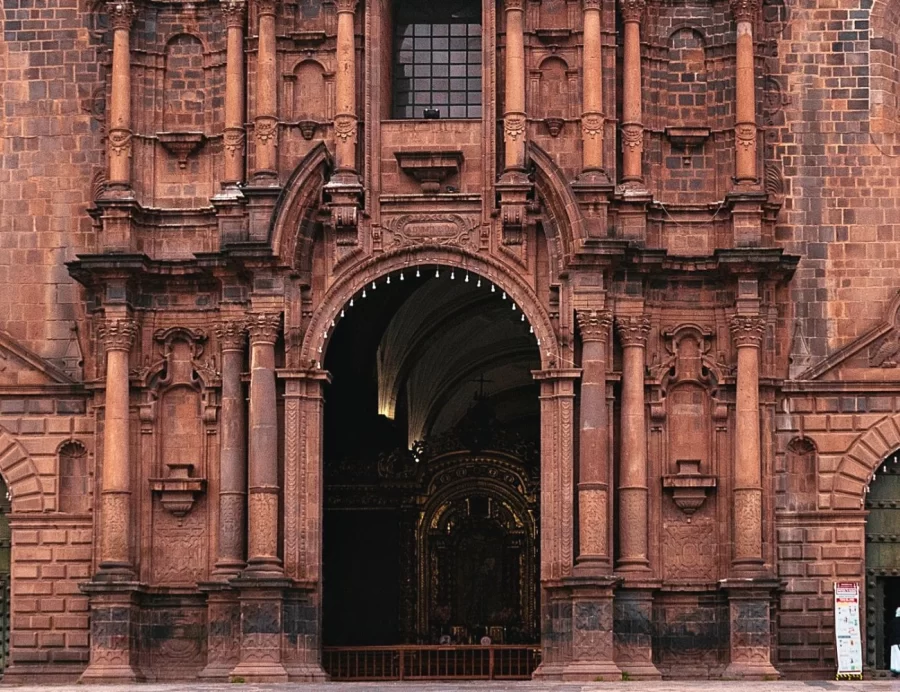The Cathedral Basilica of Cusco is located in the same Plaza de Armas of the city, is admired by visitors because it is one of the best monuments that houses a variety of artistic treasures.
Considered as Cultural Heritage of the Nation, it was built on the ancient palace of the Inca Wiracocha (creator of the universe), a site that was known as "Quishuarcancha".
Table of Contents
During the Inca Empire, the space of the cathedral was a meeting point for important meetings and ceremonies because it is very close to the "Huacaypata" known today as the main square of Cusco.
In 1536 the Bishopric of Cusco was created by Fray Vicente Valverde, who as bishop had the job of finding the right site for the construction of the cathedral and as it was necessary to accelerate the process of evangelization to the people, they decided to build the Church of Triumph (it is next to the current cathedral).
By 1559 the architect Juan Miguel de Veramendi was chosen, who was in charge of the construction and began the collection of material. Bringing stones from the Fortress of Sacayhuaman and after a year ein 1560 the first stone was placed in a ceremony that brought together the whole town.
Years passed and the cathedral has been under construction and remodeling and in 1650 there was an earthquake of great magnitude in Cusco, of course there was no serious damage to the structure of the temple, but caused many losses of human lives and material remains. In this part there is also a story about the Lord of the Earthquakes, who was taken out by neighbors, who tell how he supported them spiritually.
The construction of most of the cathedral was executed during the year 163 and within another five years, in 1649, the towers and facade were delivered. In 1668, it was finally completed in its entirety, becoming a transcendental monument of the Imperial City.
After reviewing the history of the Basilica Cathedral of Cusco, its construction began in 1560 with the laying of the first stone and was completed in 1668.
The meeting of the Basilica Cathedral of Cusco leads you to the north of the Plaza de Armas of Cusco, this is located in the central part of the city.
The Cathedral Basilica of Cusco is known for containing works of great historical value both inside and outside its religious spaces.
It has a baroque architecture with mestizo elements, it is notorious to observe the three naves that accompany it, the part of the plant is rectangular, it contains about twenty-four vaults, among more compounds in the structure of the cathedral.
When you enter you find paintings composed of engravings and canvases of the seventeenth century that belong to Europe, in the same line there are several works of Andean style painters who were part of the Cusco School. In addition, you can see wooden sculptures of Christ, saints and virgins.
Al llegar a la catedral, serás recibido por la hermosa Plaza de Armas de Cusco y en la entrada está el imponente monumento religioso donde es tradición tomarse fotografías de recuerdo.
You will find yourself in a colorful space towards a part of the houses with a stone base typical of the Inca Empire and above these the colonial buildings that tell more than one story and where Tierras de los Andes can guide your visit to this and other churches of the immortal Cusco.
Once inside the church you will be able to appreciate diverse artistic works, such as the ones presented below:
It is one of the important parts of the cathedral because in a chapel it shows the set of silver objects, where to highlight a coffin to carry the statue of the Lord of the Tremors and a trellis that has the form of a small temple used during the celebration of Corpus Christi.
In 1755, the Cusco painter Marcos Zapata replicated the painting of the last supper in the Cathedral of Cusco, becoming a very relevant artistic work for containing elements of the Andean culture, where the duality of life and death is observed. Likewise, it is notorious the image of the guinea pig next to the fruits and corn tortillas that are traditional food of the city,
Known as the choir stalls
It contains an elegant cathedral choir, where you can appreciate panels of full-length saints carved in high relief and they accompany 56 chairs of the stalls made of wood painted red and gold.
The Chapel of the Lord of the Tremors is a very valuable heritage within the religious community because during the earthquake of March 31, 1650 the neighbors decided to take him out in procession to beg his forgiveness and that by miracle the telluric movements were decreasing. From that moment on he became the protector of the city of Cusco, affectionately called Taytacha (father) of the earthquakes.
It is appropriate to see him during the Monday procession of Holy Week, as he is the sworn patron saint of the Cusco region. The red and black colors stand out in his clothing, which in the Andean world represent time and space respectively.
It is a space that is on the right side of the main altar, where the walls are full of portraits of the bishops who were part of the city of Cusco, where you will also see a set of 8 paintings depicting the miraculous life of St. Peter and an altarpiece carved in cedar of the "Christ of the Agony".
The Crypts are enclosures for the burial of the dead, in the case of the Cathedral of Cusco these functioned under the right side of the main altar where they contain the ashes of the archbishops of the city.
Next to the cathedral is the Iglesia del Triunfo, where the crypt of the chronicler Garcilaso de la Vega is located. It is worth mentioning that only half of the crypt is in Cusco and the other half in Spain.
The opening hours are from Monday to Sunday from 10:00 am to 6:00 pm.
The entrance fee for the Cathedral of Cusco is included in the Religious Circuit Ticket which includes the Cathedral, the Temple of San Blas, the Temple of San Cristobal and the Archbishop's Museum.




